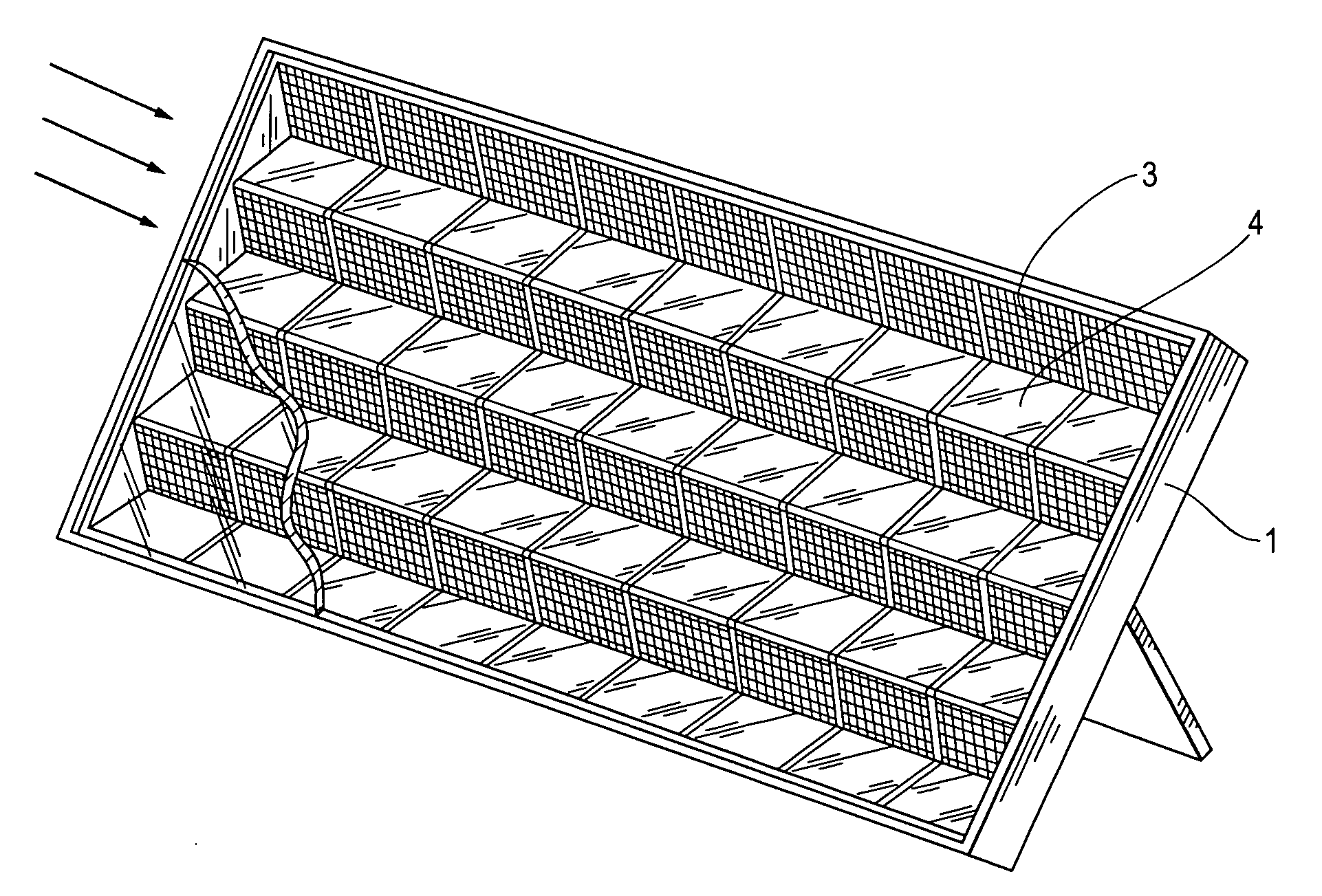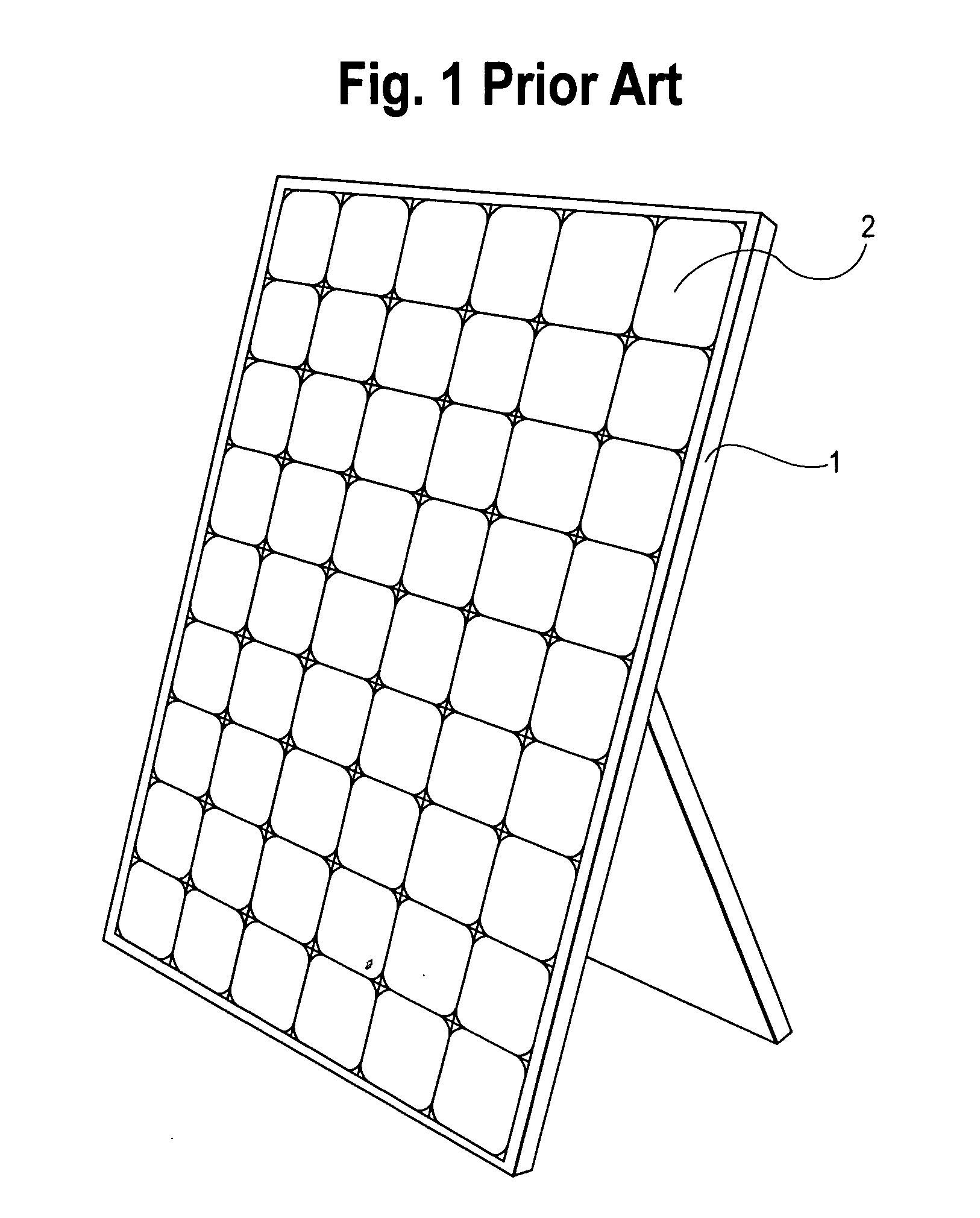Method and apparatus for arranging a solar cell and reflector
a solar cell and reflector technology, applied in lighting and heating equipment, light radiation electric generators, generators/motors, etc., can solve the problems of high cost of solar devices, especially solar photovoltaic cells, and the use of solar energy, and achieve the effect of reducing performan
- Summary
- Abstract
- Description
- Claims
- Application Information
AI Technical Summary
Benefits of technology
Problems solved by technology
Method used
Image
Examples
Embodiment Construction
[0023]FIG. 1 shows a prior art method of making a solar panel. A frame 1 is built and either supported or attached to a roof with flat, tiled panels 2 that contain solar cells. Tiles may have weather-tight covers to protect the cells. This arrangement does not lead to optimum efficiency in the amount of light striking the cells.
[0024]FIG. 2 shows a side view of an embodiment of the present invention. A solar cell 3 is rotated at around a 45 degree angle to module cover 5. A reflector 4, also at around a 45 degree angle to module cover 5 is located approximately perpendicular to and adjacent to solar cell 3. The reflector 4 can be equivalent in length and width to solar cell 3. The reflector 4 and solar cell 3 form a V-shape with the opening parallel to module cover 5. Light that enters the module perpendicular to the module cover 5 will hit the solar cell 3 (at a 45 degree angle) directly or after reflecting off reflector 4. The solar cell 3 combined with the reflector 4 in this ori...
PUM
 Login to View More
Login to View More Abstract
Description
Claims
Application Information
 Login to View More
Login to View More - R&D
- Intellectual Property
- Life Sciences
- Materials
- Tech Scout
- Unparalleled Data Quality
- Higher Quality Content
- 60% Fewer Hallucinations
Browse by: Latest US Patents, China's latest patents, Technical Efficacy Thesaurus, Application Domain, Technology Topic, Popular Technical Reports.
© 2025 PatSnap. All rights reserved.Legal|Privacy policy|Modern Slavery Act Transparency Statement|Sitemap|About US| Contact US: help@patsnap.com



